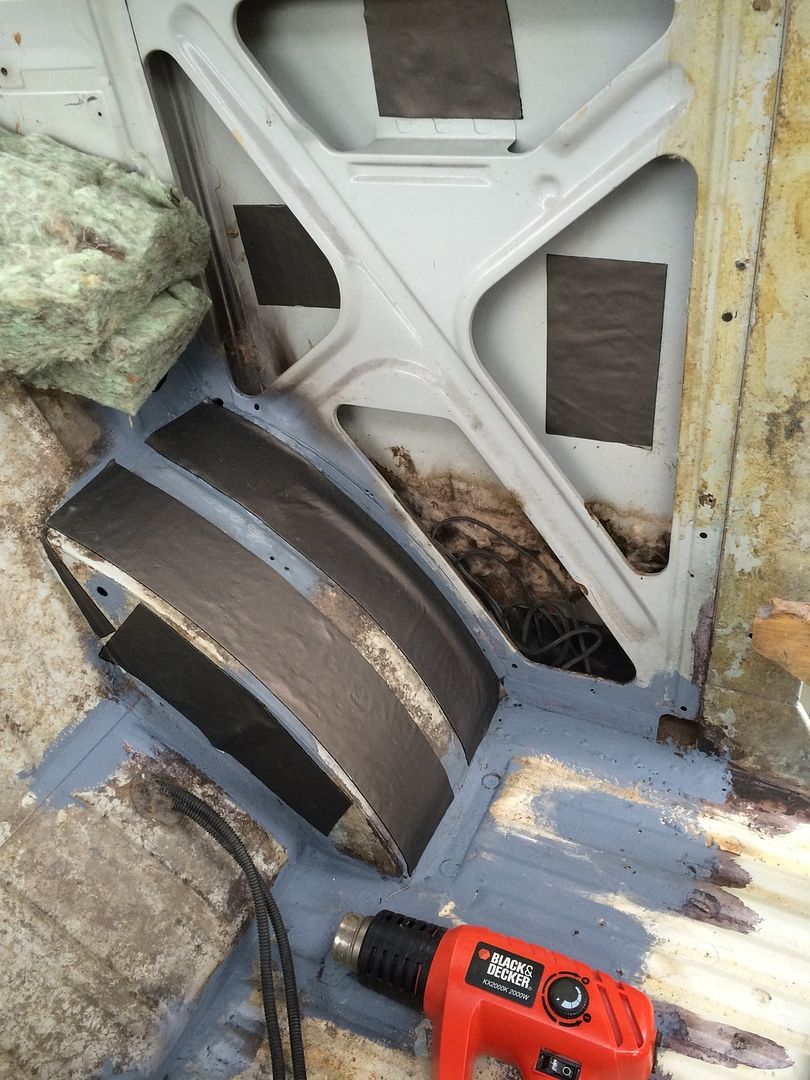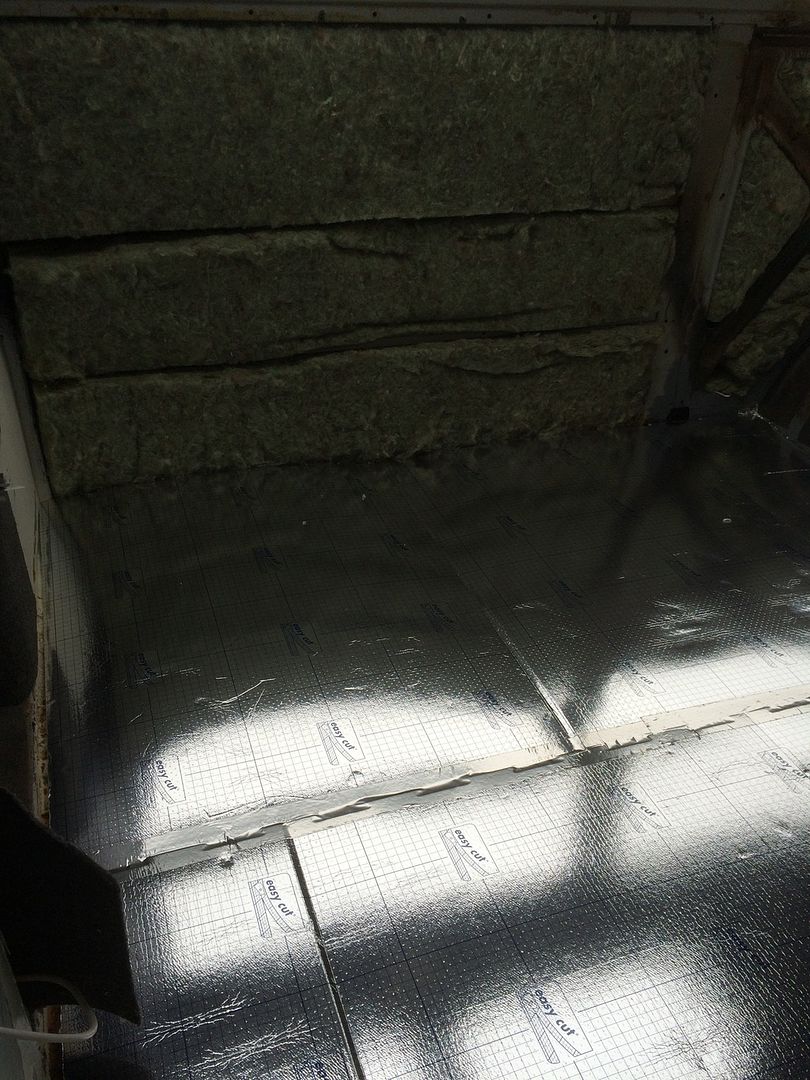You are using an out of date browser. It may not display this or other websites correctly.
You should upgrade or use an alternative browser.
You should upgrade or use an alternative browser.
Recommendations for insulating my floor, sides and roof
- Thread starter 69ragtop
- Start date

Help Support Early Bay Forum:
This site may earn a commission from merchant affiliate
links, including eBay, Amazon, and others.
I've just started doing mine and I've started off with the pop top. I've got 25mm of celotex nailed up there with that very fancy named adhesive called 'Sticks Like ****', I thought I'd cut the celotex halfway through with a circular saw then bend it around the curve of the late Devon pop top I have. Imagine how delighted I was when I cut a prototype from the off cut to see whether to put the cuts on the inner or the outer surface and the cuts are now facing the interior because it naturally bends that way when you cut it half way through with a circular saw, a real bummer though if you wanted to keep it flat I spose. So that's the start and the largest are and I'll gradually work my way through the bus. As I come over the slopy bit of the engine bay, I'm toying with the idea of routing it out to get it down tight on the ribs, and that should make a large noise reduction too.
Ozziedog ',,,,,,,,, snug as a bug in a rug',,,,,, maybe. :mrgreen:
Ozziedog ',,,,,,,,, snug as a bug in a rug',,,,,, maybe. :mrgreen:
With insulation, you need to understand about the dew point and generally speaking it's the more the merrier but that's generally speaking. The insulation has two jobs, mostly heat restriction / retention but also to slow down / restrict sound and part of that bit is stopping panel drumming. Some or most insulations are better at one job, so the perfect solution is to use two types but that's not very practical mostly because of space and possibly financial limitations. Dyna mat for instance is probably one of the better insulators for sound but not that good for heat and also quite expensive, by its very nature it's not designed to cover the entire panel but that's what you need for heat retention. Also using a closed cell insulation is a must as it will not get saturated with condensation from the areas with limited insulation, like the side panels and the door panels where it will be hard if not impossible to get a full coverage of insulation and these areas are gonna be where the warm air from you and your passengers hits the cold metal of the bodywork and creates condensation which drips down the inside of your bus and or inside the panels. The answer really is only go camping when its baking hot, because trying to keep an old tin can warm is trikky.
Ozziedog,,,,,,, celotex gets my vote :mrgreen: :mrgreen:
P.S. Stay away from fibreglass and all loose insulation or you'll drown your bus from the inside. :shock: :shock: :shock:
Ozziedog,,,,,,, celotex gets my vote :mrgreen: :mrgreen:
P.S. Stay away from fibreglass and all loose insulation or you'll drown your bus from the inside. :shock: :shock: :shock:
TheHewsonFamily
Well-known member
- Joined
- Jul 28, 2014
- Messages
- 89
- Reaction score
- 0
Similar threads
Vehicle For Sale
1971 westy weekender
- Replies
- 0
- Views
- 353
Vehicle For Sale
1972 Crossover
- Replies
- 1
- Views
- 478




